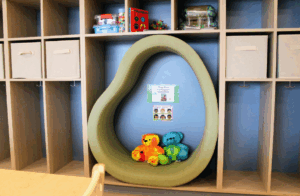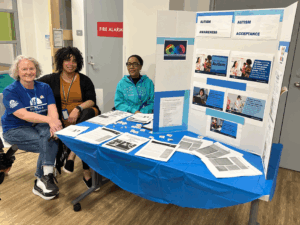A Space That’s Ripe for Learning
- by hhc_admin_1
In a sunny corner of The Edgerley Family Horizons Center stands a small urban garden designed for growing minds. The Children’s Garden was generously donated by Matt Epstein and Deborah Hiatt and Ryan and Jennifer Debin.
In New England, outdoor gardening season doesn’t last very long so when June came around this year, the call went out to plant up those beautiful new raised beds. It was Horizons’ first season with the Children’s Garden, and an opportunity for a team of people with green thumbs to come together to make it a productive space that’s ripe for learning.
Not surprisingly, a number of Horizons staff had an interest and knowledge in helping things grow – so under the leadership of Jayd Rodrigues, a committee was formed with teachers who were excited to use the new space. Classroom volunteer Leslie Wilcott-Henrie joined the committee too, and took on the role of lead gardener. For the last twelve years, she’d been a trusted Horizons volunteer, conveniently, with an interest in gardening. Before moving to the new building, she’d regularly planted an “edible” playground garden at Horizons in large plastic containers which gave her a sense for how the teachers and children might interact with the garden space.
It was a perfect combination – her growing know-how and familiarity with Horizons gave her the confidence to start by doing. Knowing time was of the essence, she got approval to fill the beds with organic soil and planted cherry tomatoes, peppers, tomatillos and basil.
Once the beds were planted, the committee coordinated watering and plant care and began talking about how to share the fresh vegetables and herbs with families. Over the course of the season, the plants thrived and so did the children visiting.
Leslie’s appreciation for the hard work she sees the teachers putting into their students has her thinking about curriculum that the garden can support.
“There are so many opportunities to turn this space into another learning zone for children. Whether they’re seeing plants develop, examining seeds, talking about pollinators,” she imagined, “we can adjust the plantings in the Children’s Garden to adapt to what the teachers are teaching in their classroom curriculum. This was a great season for us to learn what we can do here; now the committee is excited to begin planning this winter for what we should grow next summer.”
Jayd’s got high hopes for what the Children’s Garden can become too.
“We can actually grow food that the children can plant, grow and then taste. We want to get parents involved too, so they can share their ideas about what to grow; ideally food they’d serve at their tables that their children will be open to eating because they helped it grow.”
The Children’s Garden has become and will continue to be a space where staff, students, and volunteers alike can connect over the unique satisfaction of putting something in the soil and watching it flourish.






